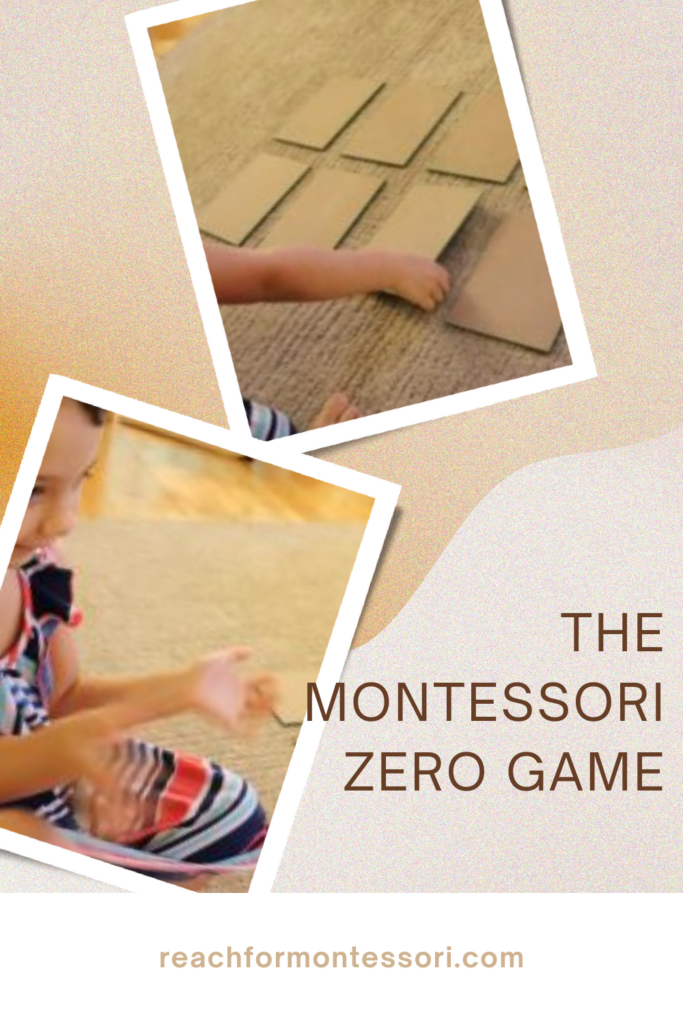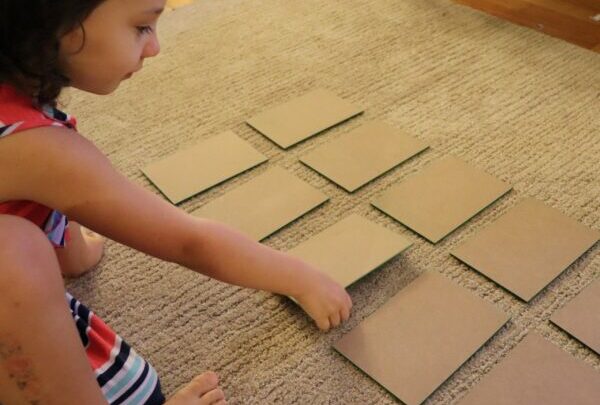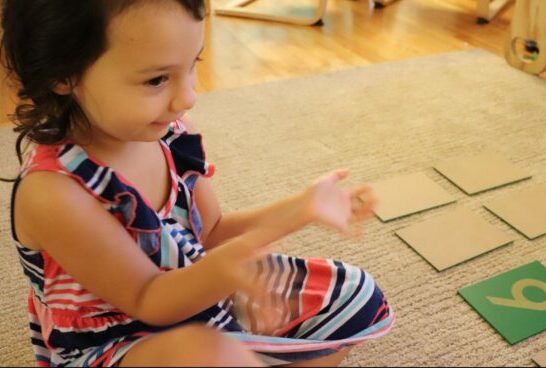In this article, you'll learn how to the Montessori Zero Game.
I'll also go over a little about how Montessori teaches the concept of zero.
This is a simple math game that children in Montessori classrooms really enjoy.
Whether you're doing Montessori homeschooling or traditional homeschooling, this is a great game to integrate into your curriculum.
So, let's get right to it.

(This post contains affiliate links. Purchasing from these links costs you nothing extra, but helps with our website upkeep.)
How Montessori teaches the concept of zero: The Zero Game
Montessori math activities focus on associating quantities with their corresponding numbers, which is called 1:1 correspondence.
The progression goes like this: Children first work with quantities, then move on to the symbols, and finally come to understand the association between the two.
Zero, however, doesn't have a tangible quantity associated with it, which makes it more abstract than other numbers.
This presents a challenge for homeschooling parents and teachers.
There are easy and fun ways to introduce zero, though, and this one is from Montessori schools – it's called the Zero Game.
The Zero Game is one of a child's first introductions to the abstract concept of zero.
Early Montessori math activities focus heavily on the numbers 0-9. The reason for this has to do with future decimal system work, which we will discuss in a later post.

What is the Zero Game?
At the point when number symbols are being learned is when the Zero Game is introduced.
This game reinforces the concept of zero, as introduced in the pre-requisite materials, such as the Spindle Boxes.
This game is a lot of fun for the children and it also has character-building elements to it.
When the child picks the zero card, she must not participate in the action, which is sometimes a difficult thing for children.
This helps children develop self-containment and patience.
How cool is that? A fun game that teaches math and patience.
We play this game with the Sandpaper Numbers. However, I don’t believe that is entirely necessary if you are doing Montessori homeschooling or unschooling.
Cardstock with a written number would suffice. The element of muscle memory from tracing the numbers would be absent, but the child would still benefit from every other aspect of the game.
Also, there are many Montessori homeschooling parents who choose to make their own Sandpaper Numbers.
That is another option if purchasing the materials isn't in your budget.
Below is a link for the Sandpaper Numbers if you are interested in purchasing them.
- 🌱Ten sandpaper numerals 0-9 mounted on green wooden board and…
- 🌱To teach the child the written symbol for numbers 1 – 10.
- 🌱Dimensions of tile: 6.5 x 5 inches; box: 6.1 x 4.6 x 3.6…
How to play the Montessori Zero Game
The Zero Game is so easy to set up. You simply place the Sandpaper Numbers face down and ask the child or children to pick a number and turn it over.

Whatever number the child picks, encourage her to clap that many times. When she turns over the zero card, encourage her to remain still and silent.
If she already understands the concept of zero, you can remind her that zero means nothing.
Children will often ask to play this game after they fully understand the concept simply because it's enjoyable.

To spice this game up a bit, instead of clapping, the child or children can do a number of other motions.
You can add the element of gross motor activity if you feel like the child could use a little extra movement at the time of the game.
They can pat their knees, jump up and down, stomp, etc.
And, of course, after every Montessori activity, remind the child to put the number cards back in the box and return them to their place on the shelf.
I hope you enjoy this fun Montessori math activity. We sure do.
Cheers and don't forget to subscribe!


Pingback: Montessori Math: The Spindle Boxes — Parenting with Purpose
It is very nice explanation.